Grow Kiwi at Home? Absolutely! Imagine plucking juicy, tangy kiwis fresh from your own backyard. It sounds like a tropical dream, doesn’t it? But trust me, with a little know-how, you can transform that dream into a delicious reality. This isn’t just about gardening; it’s about creating a sustainable food source, connecting with nature, and impressing your friends with your green thumb prowess!
For centuries, the kiwi fruit, originally known as the Chinese gooseberry, has been cultivated in China, prized for its unique flavor and nutritional benefits. It wasn’t until the early 20th century that it made its way to New Zealand, where it was rebranded and popularized as the kiwi we know and love today. Now, you can bring this fascinating fruit’s journey full circle by cultivating it yourself.
Why should you learn to grow kiwi at home? Well, store-bought kiwis can be expensive, and let’s be honest, sometimes they lack that vibrant, fresh flavor. Plus, knowing exactly where your food comes from and how it’s grown is incredibly rewarding. In this article, I’m going to share some simple, DIY tricks and hacks that will empower you to successfully grow your own kiwi vines, even if you’re a complete beginner. Get ready to embark on a fun and fruitful gardening adventure!
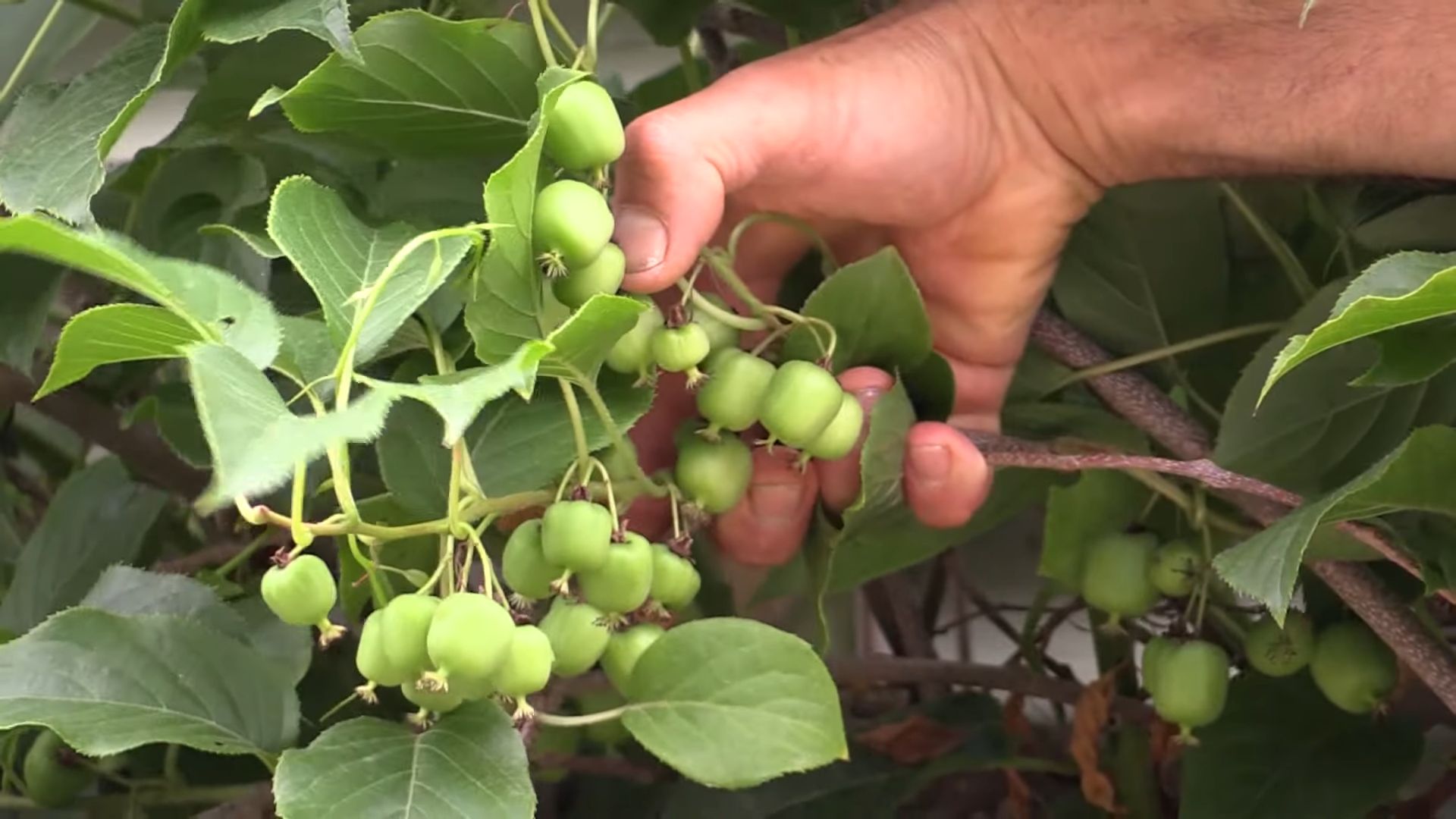
Growing Kiwi at Home: A Comprehensive DIY Guide
Hey there, fellow gardening enthusiasts! Ever dreamt of harvesting your own fuzzy, tangy kiwis right in your backyard? Well, dream no more! Growing kiwis at home is totally achievable, even if you don’t have acres of land. It takes a bit of patience and planning, but the reward of fresh, homegrown kiwis is absolutely worth it. I’m going to walk you through everything you need to know, from choosing the right variety to harvesting your delicious bounty. Let’s get started!
Choosing the Right Kiwi Variety
Okay, first things first: not all kiwis are created equal, especially when it comes to growing them in your home garden. You need to consider your climate and the space you have available. Here’s a breakdown of some popular varieties:
* Hardy Kiwi (Actinidia arguta): This is your best bet if you live in a colder climate (zones 4-8). Hardy kiwis are super resilient and can withstand freezing temperatures. The fruits are smaller than the fuzzy kiwis you find in the store, but they’re just as delicious and you can eat the skin!
* Fuzzy Kiwi (Actinidia deliciosa): These are the classic kiwis you’re probably most familiar with. They need a warmer climate (zones 7-9) and a longer growing season. They’re also more susceptible to frost damage.
* Self-Fertile Kiwi: Some varieties, like ‘Issai’ hardy kiwi, are self-fertile, meaning you only need one plant to get fruit. This is a huge advantage if you have limited space. However, even self-fertile varieties often produce more fruit if you have a male pollinator nearby.
Important Note: Most kiwi varieties are dioecious, meaning they have separate male and female plants. You’ll need at least one male plant for every six to eight female plants to ensure proper pollination and fruit production. Check the plant label carefully when you’re buying your kiwis to make sure you’re getting the right mix.
Preparing Your Kiwi Planting Site
Kiwi vines are vigorous growers and need a sturdy support system. They also need well-drained soil and plenty of sunlight. Here’s how to prepare your planting site:
* Sunlight: Kiwis need at least 6-8 hours of direct sunlight per day. Choose a location that gets plenty of sun, especially in the morning.
* Soil: Kiwis prefer well-drained, slightly acidic soil (pH 6.0-6.5). Amend your soil with compost or other organic matter to improve drainage and fertility. Avoid heavy clay soils, as they can become waterlogged.
* Support System: Kiwi vines can grow up to 40 feet long, so you’ll need a strong trellis or arbor to support them. A T-bar trellis is a popular option, but you can also use a fence or even a sturdy pergola. Make sure your support system is built to last, as it will need to support a lot of weight.
* Spacing: Space your kiwi plants at least 10-15 feet apart, depending on the variety. Hardy kiwis can be planted closer together than fuzzy kiwis.
Planting Your Kiwi Vines
Now for the fun part: planting your kiwi vines! Here’s a step-by-step guide:
1. Dig the Hole: Dig a hole that’s twice as wide as the root ball and just as deep.
2. Amend the Soil: Mix some compost or other organic matter into the soil you removed from the hole.
3. Remove the Plant from the Container: Gently remove the kiwi plant from its container, being careful not to damage the roots. If the roots are circling the pot, gently loosen them before planting.
4. Plant the Kiwi: Place the kiwi plant in the hole, making sure the top of the root ball is level with the surrounding soil.
5. Backfill the Hole: Backfill the hole with the amended soil, gently tamping it down around the plant.
6. Water Thoroughly: Water the newly planted kiwi vine thoroughly to help settle the soil and encourage root growth.
7. Mulch: Apply a layer of mulch around the base of the plant to help retain moisture and suppress weeds. Use organic mulch like wood chips or straw.
Caring for Your Kiwi Vines
Once your kiwi vines are planted, they’ll need regular care to thrive. Here’s what you need to do:
* Watering: Kiwis need consistent moisture, especially during the growing season. Water deeply and regularly, especially during dry spells. Avoid overwatering, as this can lead to root rot.
* Fertilizing: Fertilize your kiwi vines in the spring with a balanced fertilizer. Follow the instructions on the fertilizer label. You can also amend the soil with compost or other organic matter to provide nutrients.
* Pruning: Pruning is essential for kiwi vines. It helps to control their growth, improve air circulation, and promote fruit production. Prune your kiwi vines in the late winter or early spring, before new growth begins.
* First Year: Focus on establishing the main trunk and training it to the trellis. Select the strongest shoot and tie it to the support. Remove any other shoots that emerge from the base.
* Second Year: Select two or three lateral branches to train along the trellis wires. These will become your fruiting arms. Prune back any other branches.
* Subsequent Years: Prune back the fruiting arms to encourage new growth. Remove any dead, damaged, or diseased wood. Also, remove any suckers that emerge from the base of the plant.
* Pest and Disease Control: Kiwis are generally resistant to pests and diseases, but they can be susceptible to certain problems, such as spider mites, scale, and root rot. Inspect your kiwi vines regularly for signs of pests or diseases. If you find any problems, treat them promptly with an appropriate insecticide or fungicide.
* Pollination: As mentioned earlier, most kiwi varieties need a male pollinator to produce fruit. If you don’t have a male plant, you can hand-pollinate your female plants. To hand-pollinate, collect pollen from the male flowers and transfer it to the female flowers using a small brush.
Harvesting Your Kiwis
After all your hard work, it’s finally time to harvest your kiwis! Here’s how to tell when they’re ready:
* Timing: Kiwis typically ripen in the fall, usually from late September to November, depending on the variety and your climate.
* Touch: Gently squeeze the kiwi fruit. If it gives slightly to the touch, it’s ready to harvest.
* Taste Test: The best way to tell if your kiwis are ripe is to taste one. Pick a few kiwis and let them ripen indoors for a few days. If they taste sweet and tangy, the rest of your kiwis are probably ready to harvest.
* Harvesting: To harvest your kiwis, gently twist them off the vine. Be careful not to damage the fruit.
* Storage: Kiwis can be stored in the refrigerator for several weeks. To ripen them more quickly, place them in a paper bag with an apple or banana.
Troubleshooting Common Kiwi Growing Problems
Even with the best care, you might encounter some challenges when growing kiwis. Here are some common problems and how to address them:
* No Fruit Production: This is often due to a lack of pollination. Make sure you have a male pollinator plant nearby. If you’re not sure, you can try hand-pollinating your female plants. Another reason could be improper pruning. Kiwis fruit on one-year-old wood, so avoid pruning too heavily.
* Yellowing Leaves: Yellowing leaves can be a sign of nutrient deficiency or overwatering. Check the soil drainage and amend the soil with compost or fertilizer if needed.
* Pest Infestations: Keep an eye out for pests like spider mites and scale. Treat infestations promptly with an appropriate insecticide.
* Frost Damage: Fuzzy kiwis are susceptible to frost damage. Protect your vines from frost by covering them with blankets or burlap during cold snaps. Hardy kiwis are more cold-hardy and can usually withstand frost without protection.
* Vine Dieback: This can be caused by fungal diseases or poor soil drainage. Improve soil drainage and treat fungal diseases with an appropriate fungicide.
Enjoying Your Homegrown Kiwis
Congratulations! You’ve successfully grown your own kiwis at home. Now it’s time to enjoy the fruits of your labor. Here are some ideas:
* Eat them fresh: Simply peel and slice your kiwis for a healthy and delicious snack.
* Add them to smoothies: Kiwis add a tangy sweetness to smoothies.
* Make kiwi jam or jelly: Preserve your kiwis by making jam or jelly.
* Use them in desserts: Kiwis are a
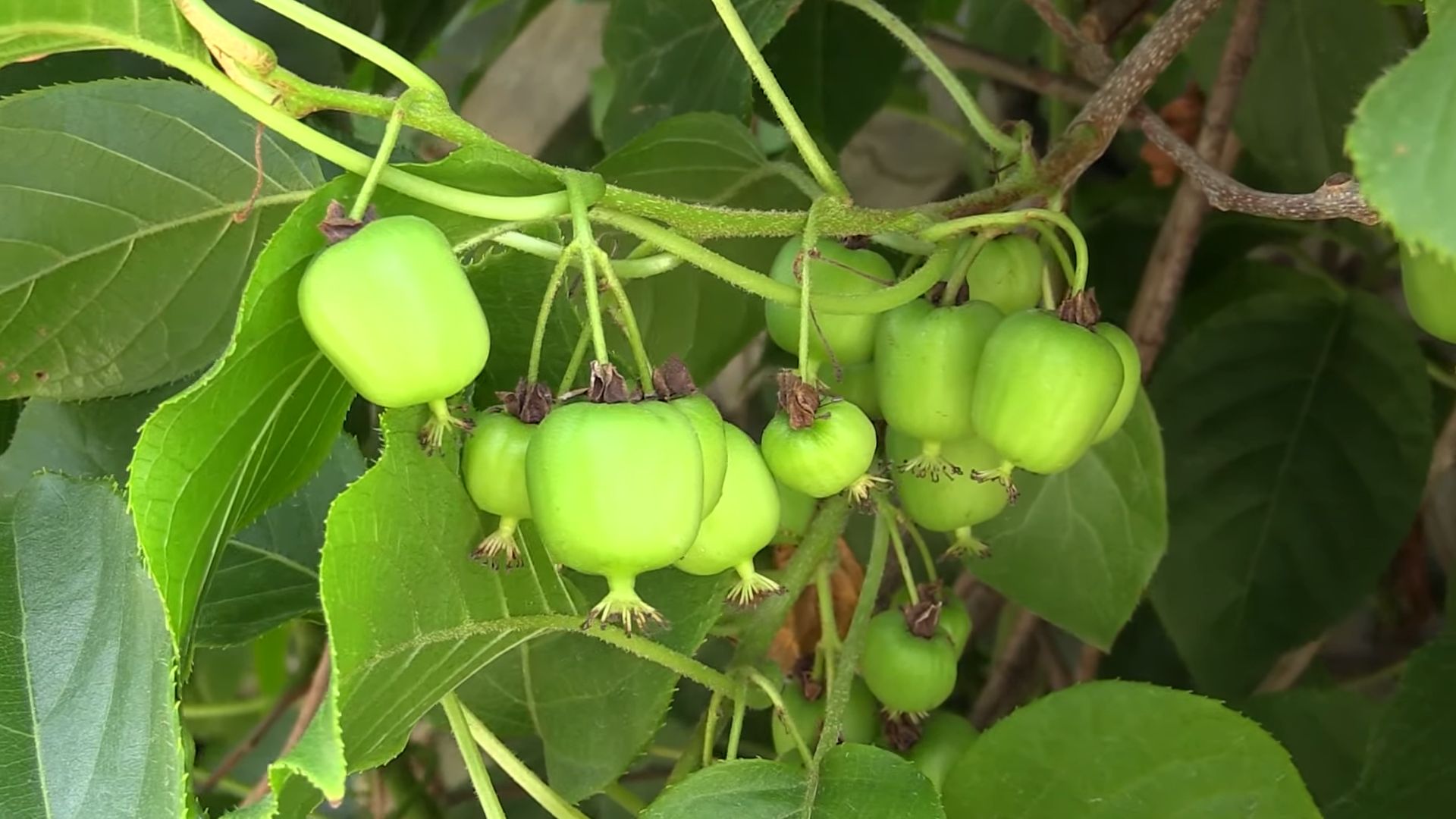
Conclusion
So, there you have it! Growing kiwi at home might seem like a daunting task reserved for seasoned gardeners, but with a little patience, the right knowledge, and this straightforward DIY trick, you can transform your backyard into a thriving kiwi haven. We’ve demystified the process, breaking it down into manageable steps that anyone can follow, regardless of their gardening experience.
Why is this DIY approach a must-try? Because it empowers you to cultivate your own delicious and nutritious kiwis, free from the pesticides and long-distance transportation often associated with store-bought fruit. Imagine the satisfaction of harvesting your own kiwis, knowing exactly where they came from and how they were grown. Plus, it’s a fantastic way to connect with nature, learn about plant life cycles, and add a unique and visually appealing element to your garden.
But the benefits don’t stop there. Growing your own kiwi allows for experimentation and customization. Feel free to explore different kiwi varieties to find the ones that best suit your taste and climate. Consider adding a trellis or pergola to create a stunning vertical garden feature. You can even try propagating your own kiwi plants from cuttings, expanding your kiwi empire and sharing the bounty with friends and family.
Don’t be afraid to experiment! Try different soil amendments to see what works best for your specific growing conditions. Observe your plants closely and adjust your watering and fertilizing schedule as needed. The beauty of gardening lies in the learning process, and every season brings new opportunities to refine your techniques.
We’ve provided you with the tools and knowledge to embark on this exciting journey. Now, it’s time to put them into practice. We wholeheartedly encourage you to try this DIY trick for growing kiwi at home. The rewards are well worth the effort, from the delicious fruit to the sense of accomplishment that comes with nurturing your own plants.
Once you’ve given it a try, we’d love to hear about your experience! Share your successes, challenges, and any variations you’ve discovered in the comments below. Your insights can help other aspiring kiwi growers and contribute to a thriving community of home gardeners. Let’s all learn and grow together! Remember, mastering the art of growing kiwi at home is not just about the fruit; it’s about the journey, the connection with nature, and the satisfaction of creating something beautiful and delicious with your own hands. So, grab your gardening gloves, get your hands dirty, and start growing your own kiwi today!
Frequently Asked Questions (FAQ)
What are the best kiwi varieties to grow at home?
The best kiwi varieties for home growing depend largely on your climate. Generally, ‘Hayward’ is a popular and reliable choice for warmer regions, known for its large, flavorful fruit. For colder climates, consider varieties like ‘Anna’ or ‘Issai’, which are more cold-hardy. ‘Issai’ is also self-fertile, meaning you only need one plant to produce fruit, while most other varieties require both a male and female plant for pollination. Research the specific varieties that are well-suited to your USDA hardiness zone for the best results. Consider factors like fruit size, taste, and disease resistance when making your selection. Local nurseries are excellent resources for finding varieties that thrive in your area.
How much space do I need to grow kiwi?
Kiwi vines are vigorous growers and require a significant amount of space. Each vine can spread 15-20 feet or more, so plan accordingly. They need a strong support structure, such as a trellis, pergola, or fence, to climb on. Ensure the support is robust enough to handle the weight of the mature vines and the fruit. When planting multiple kiwi plants (especially if you need both male and female plants), space them at least 10-15 feet apart to allow for adequate growth and air circulation. Insufficient spacing can lead to overcrowding and increased risk of disease.
How long does it take for a kiwi plant to produce fruit?
Patience is key when growing kiwi! It typically takes 3-5 years for a kiwi plant to start producing fruit after planting. The exact timeframe depends on the variety, growing conditions, and the age of the plant at the time of planting. Grafted plants tend to fruit sooner than those grown from seed. Proper care, including regular watering, fertilization, and pruning, can help accelerate the fruiting process. Be patient and consistent with your care, and you’ll eventually be rewarded with a bountiful harvest.
What kind of soil is best for growing kiwi?
Kiwi plants thrive in well-draining soil that is rich in organic matter. The ideal soil pH is between 6.0 and 7.0. Before planting, amend the soil with compost, aged manure, or other organic materials to improve drainage and fertility. Avoid heavy clay soils, as they can become waterlogged and lead to root rot. If you have clay soil, consider planting your kiwi vines in raised beds or containers to improve drainage. Regular soil testing can help you determine if your soil needs any additional amendments.
How often should I water my kiwi plants?
Kiwi plants need consistent moisture, especially during the growing season. Water deeply and regularly, especially during dry spells. Avoid overwatering, as this can lead to root rot. The frequency of watering will depend on your climate, soil type, and the age of the plant. Young plants need more frequent watering than established plants. A good rule of thumb is to water when the top inch of soil feels dry to the touch. Mulching around the base of the plant can help retain moisture and suppress weeds.
Do kiwi plants need fertilizer?
Yes, kiwi plants benefit from regular fertilization. Apply a balanced fertilizer in the spring, just before new growth begins. Choose a fertilizer that is specifically formulated for fruit trees or vines. Follow the instructions on the fertilizer package carefully to avoid over-fertilizing. You can also supplement with organic fertilizers, such as compost tea or fish emulsion. Avoid fertilizing in the late summer or fall, as this can encourage new growth that is susceptible to frost damage.
How do I prune kiwi plants?
Pruning is essential for maintaining the health and productivity of kiwi vines. Prune in late winter or early spring, before new growth begins. Remove any dead, damaged, or diseased wood. Thin out the vines to improve air circulation and sunlight penetration. Kiwi plants produce fruit on one-year-old wood, so be careful not to prune away too much of the previous year’s growth. Train the vines to grow along the support structure in a way that maximizes sunlight exposure.
How do I protect my kiwi plants from pests and diseases?
Kiwi plants are generally resistant to pests and diseases, but they can be susceptible to certain problems. Common pests include aphids, spider mites, and scale insects. Control these pests with insecticidal soap or horticultural oil. Diseases such as root rot and botrytis can also affect kiwi plants. Prevent these diseases by ensuring good drainage and air circulation. Remove any infected plant material promptly. Regular monitoring can help you detect and address any problems early on.
Can I grow kiwi in a container?
Yes, you can grow kiwi in a container, but it requires a large and sturdy container. Choose a container that is at least 24 inches in diameter and depth. Use a well-draining potting mix that is rich in organic matter. Container-grown kiwi plants will need more frequent watering and fertilization than those grown in the ground. Provide a strong support structure for the vines to climb on. Container growing is a good option for those with limited space or for those who want to move their kiwi plants indoors during the winter in colder climates.
How do I know when my kiwis are ripe?
Determining when kiwis are ripe can be tricky. Unlike some fruits, kiwis don’t change color significantly when they ripen. A good indicator is to gently squeeze the fruit. If it yields slightly to pressure, it’s likely ripe. You can also taste a few kiwis to check for sweetness. Kiwis can be harvested when they are slightly firm and then allowed to ripen further at room temperature. Store ripe kiwis in the refrigerator to prolong their shelf life.


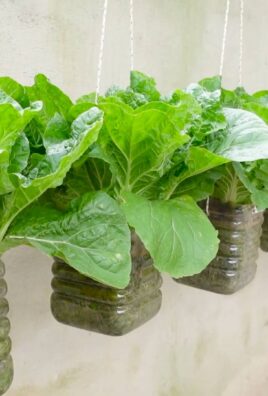
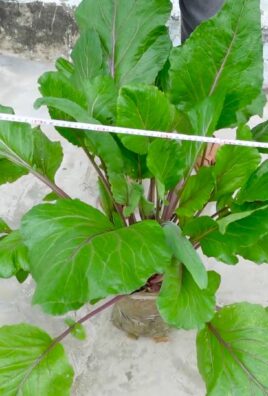
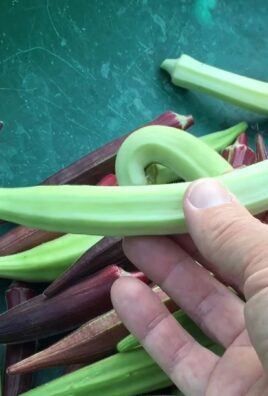
Leave a Comment